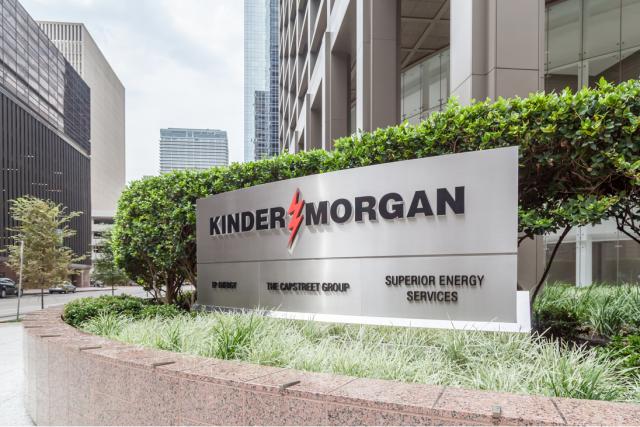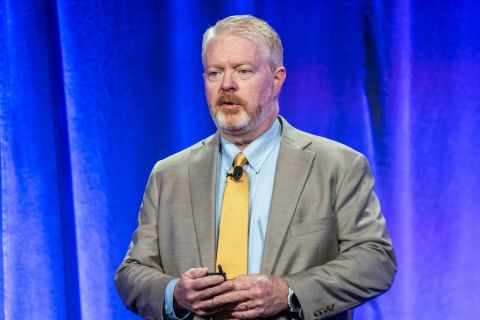
Kinder Morgan has once again pushed back start-up of its Elba Liquefaction Project near Savannah, Georgia, in another delay after previously targeting an in-service date of May 1. The Elba Island liquefied natural gas (LNG) export terminal consists of 10 units, each with a capacity of 0.25 million tonnes per annum (mtpa), for a total capacity of 2.5 mtpa.
“The start-up of Elba has been delayed due to additional common commissioning issues that are systematically being addressed on the first of the 10 liquefaction units,” Kinder Morgan spokeswoman Katherine Hill said in an emailed response to a query from Hart Energy.
“We will issue a press release when we have resolved the issues and are in service,” she added.
Hill did not provide further details on the issues in question, or on an updated timeline for the project’s start-up.
This is not the first delay for the $2.2 billion Elba Liquefaction, which initially had six units set to come online in 2018, followed by the remaining four this year. The units mark the largest deployment to date of Royal Dutch Shell’s Moveable Modular Liquefaction System (MMLS)—a small-scale LNG technology. They are designed for quick assembly)—mainly offsite – and disassembly in response to market conditions. But in July 2018, delays to this process led to Kinder Morgan pushing back the in-service date.
“The reason for the delay right now is multifactor,” Kinder Morgan’s executive chairman, Rich Kinder, said at the time. “I mean, there was a delay in getting the units assembled and then delivered to the site. And we had some construction delays as well.” The start-up date was then further postponed in October, again in January 2019, and once more in March.
The Elba Island venture is the smallest of six LNG export terminals to be built in the U.S. as part of the first wave of the country’s gas export projects, numbering six in total. It also one of only two new export projects not to be located on the U.S. Gulf Coast, along with Dominion Energy’s Cove Point LNG terminal in Maryland. Elba’s total annual capacity is equivalent to 350 million cubic feet per day (Mcf/d) of gas. With a standard LNG tanker carrying around 3.0-3.5 billion cubic feet (Bcf) of gas, a sole Elba train would need to operate at full capacity for around 100 days in order to produce sufficient LNG to export a cargo. But the units are due to come online in quick succession, one after another, shortening the amount of time required before a cargo can be shipped.
The project’s developer, Elba Liquefaction Company, is a Kinder Morgan joint venture with EIG Global Energy Partners, which holds a 49% stake. The development is supported by a 20-year contract with Shell.
The latest Elba delay comes days after the first cargo was shipped from the Cameron LNG export project in Louisiana. Start-up of Cameron LNG brings the number of operational LNG projects in the U.S. to four. Aside from Elba Island, only Freeport LNG in Texas has yet to come online from the first wave of LNG export terminals. And on June 6, Freeport LNG’s vice president of business development, Lance Goodwin, said gas flows had begun to Train 1 at his project, with the first commissioning cargo now expected to be shipped in August. Goodwin was speaking during a panel discussion at the KPMG Global Energy Conference, held in Houston this week.
This also marks the latest in a string of delays for privately held Freeport LNG, which was initially scheduled to enter service in 2018. Construction delays were exacerbated by damage caused by Hurricane Harvey in 2017 to the engineering, procurement and construction (EPC) contractor’s lay-down yard and a pipe fabrication yard.
A Freeport LNG spokeswoman, Heather Browne, confirmed to Hart Energy that first cargoes from Freeport LNG’s Train 1 are now scheduled for August, while substantial completion for Train 1 is on track for September. Train 2 first cargoes are expected in the mid-late November to early December, with substantial completion in January 2020, Browne added. Train 3 first cargoes are expected to begin in March 2020, with substantial completion anticipated in May 2020.
An order issued by the US Federal Energy Regulatory Commission (FERC) in 2014 required Freeport LNG to be in service by July 30 this year. However, the regulator recently granted Freeport an 11-month extension of the deadline to complete the three-train first phase of the project, to June 30, 2020. In mid-May, FERC also approved the construction of a fourth train at Freeport LNG. The 5 mtpa train would bring Freeport’s total capacity to 20 mtpa, making it the second-largest export terminal in the U.S.
The regulator noted in its announcement on Freeport’s Train 4 that this was the fourth LNG export project approval this year, after also authorizing the Calcasieu Pass, Port Arthur and Driftwood LNG proposals earlier in 2019.
Meanwhile, leading U.S. LNG exporter Cheniere Energy said on June 3 it had made a final investment decision (FID) on Train 6 at its Sabine Pass export terminal in Louisiana. The pace of development shows that as the first wave of LNG construction in the country winds down and the industry awaits start-ups at Elba Island and Freeport, the second wave is already getting going.
Recommended Reading
BKV CEO Chris Kalnin says ‘Forgotten’ Barnett Ripe for Refracs
2024-04-02 - The Barnett Shale is “ripe for fracs” and offers opportunities to boost natural gas production to historic levels, BKV Corp. CEO and Founder Chris Kalnin said at the DUG GAS+ Conference and Expo.
How Diversified Already Surpassed its 2030 Emissions Goals
2024-04-12 - Through Diversified Energy’s “aggressive” voluntary leak detection and repair program, the company has already hit its 2030 emission goal and is en route to 2040 targets, the company says.



